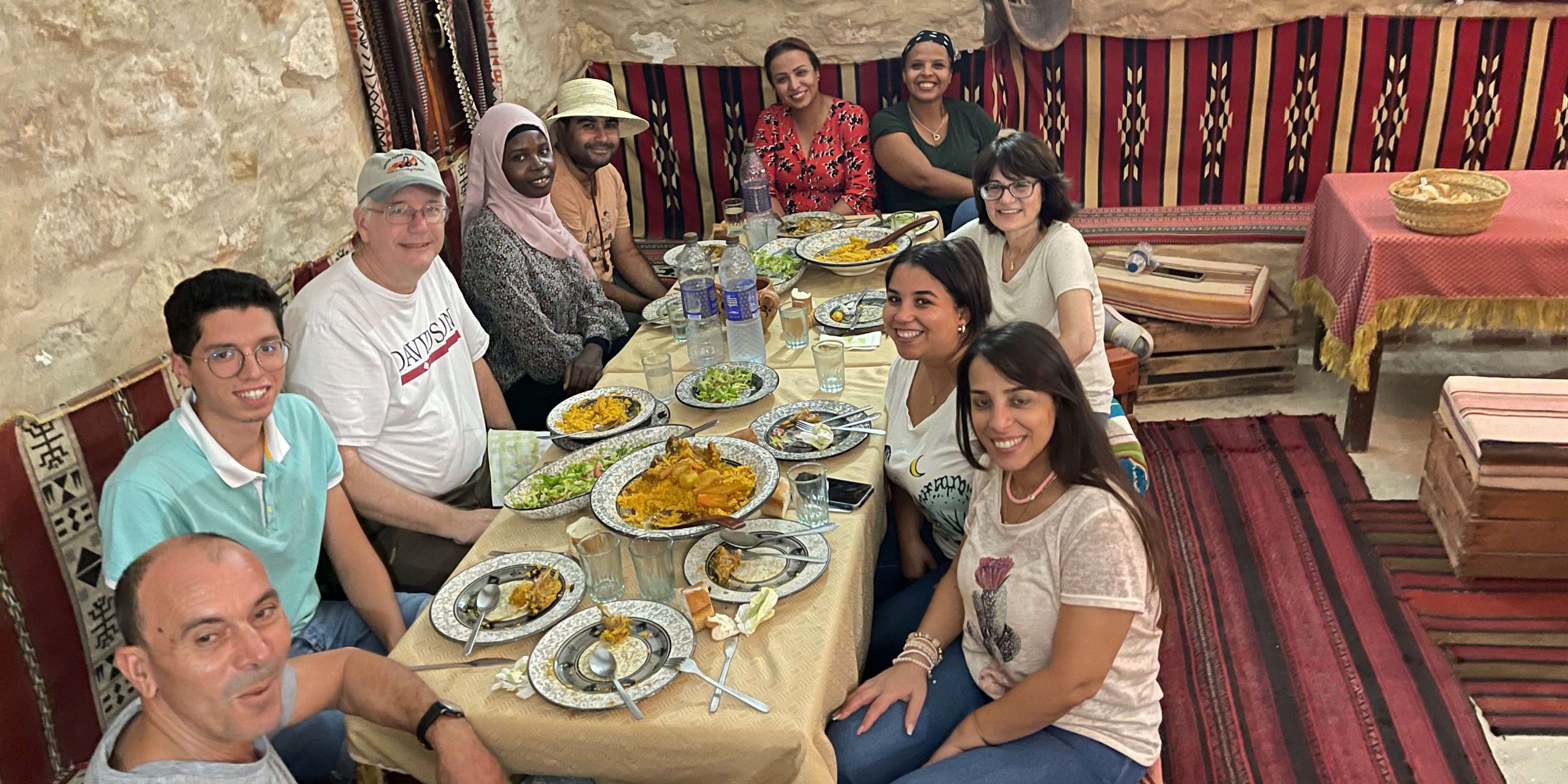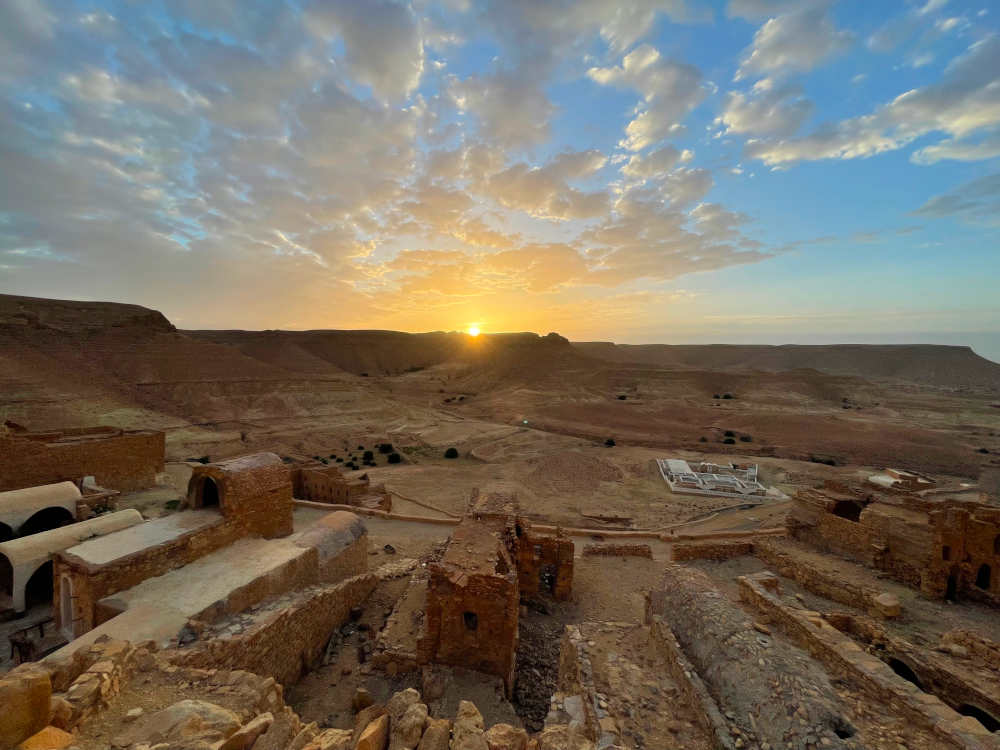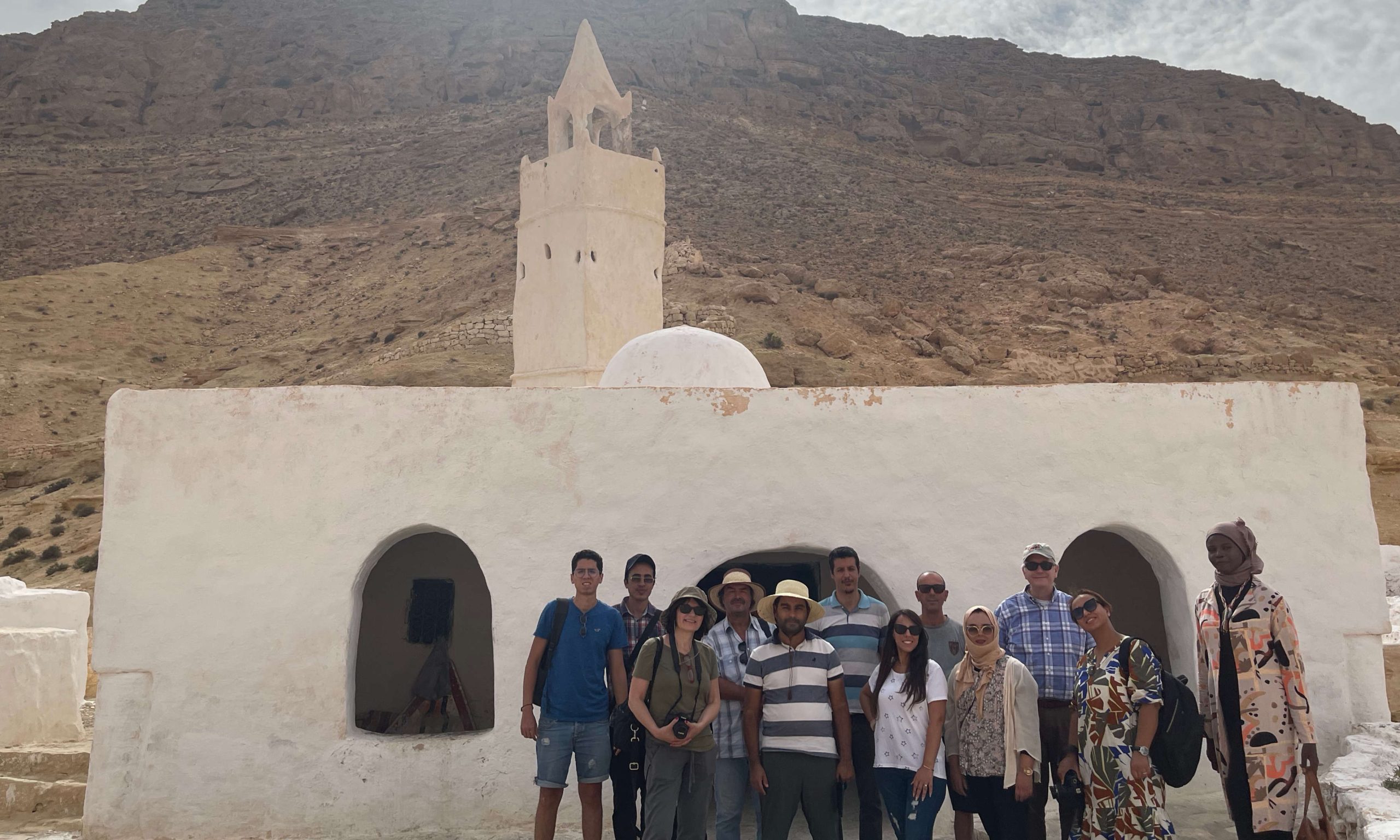

UPDATE: DOCUMENTATION OF AMAZIGH HERITAGE IN SOUTHERN TUNISIA
By Hanan Charaf
Following several successful workshops in Morocco held in September, ASOR teamed up with the civil society organization, Carthagina, to implement on a similar training session in the Tataouine governorate in the deep south of Tunisia. The training event (held from October 9-10, 2022) is part of a larger program which advocates for the ethnic and religious freedom of minorities through cultural heritage site documentation, protection, and outreach. The larger program is funded by the same anonymous donor as in Morocco. We selected Tataouine because it is home, together with Djerba, to the majority of the Amazigh Tunisians. These ethnic populations indigenous to the Maghreb region are now a minority group in Tunisia (and in other parts of the Maghreb) and are struggling to conserve their tangible and intangible heritage. Although this region is famous in some western contexts (e.g., Star Wars), it is still laboring to preserve and showcase to Tunisians and to the rest of the world its vast rich heritage passed down for millennia.
Image top left: The word Amazigh means in the native language free man and is symbolized by a stylistic figure with raised arms. The Amazigh were also called Berbers by the Greeks, a coined term that unfortunately carries derogatory connotation in modern usage.
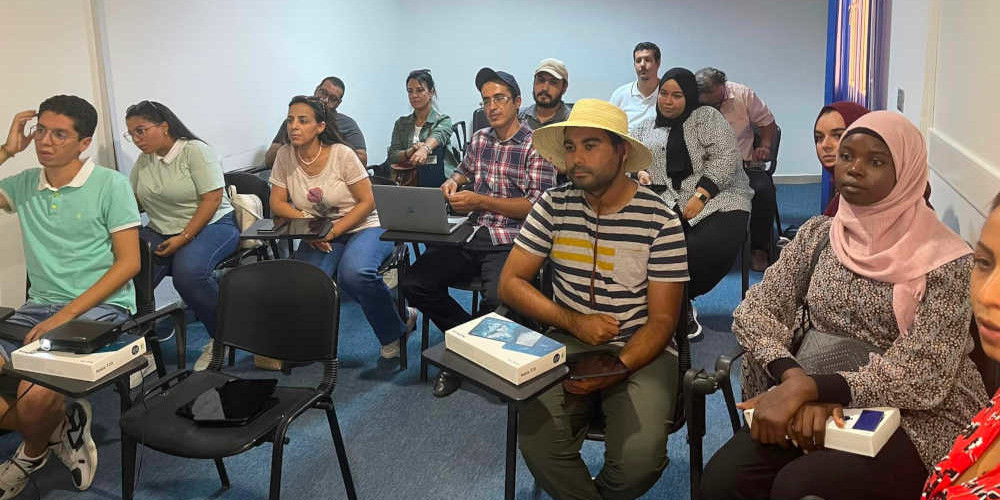
Training of 14 members of ethnic and religious minorities at the facilities of “Skills to Succeed” in the town of Tataouine.
During the first of two long and intense days, twelve (12) members of the Amazigh community (7 men and 5 women) gathered at the headquarters of the Tunisian organization Skills to Succeed in Tataouine to follow the training program created by the ASOR CHI team using open-access software to document tangible and intangible patrimony. The participants were architects, software engineers, photographers, and local activists involved in documentation and outreach activities showcasing Amazigh cultural heritage. They were all members of minority groups as well. They were joined by two participants from the island of Djerba working on the Muslim Black and Ibadi minorities. Documentation of these two latter ethnic and religious communities will be featured in future posts. Dr. Andrew Vaughn, ASOR Executive Director, and Dr. Hanan Charaf, ASOR Program Director for African Heritage Projects, delivered the training modules in Arabic, French, and English languages. The successful coordination of this event was provided by Zayneb Takouti from Carthagina, who deployed indefatigable efforts in outreaching local minority members and ensuring the full success of this training program.
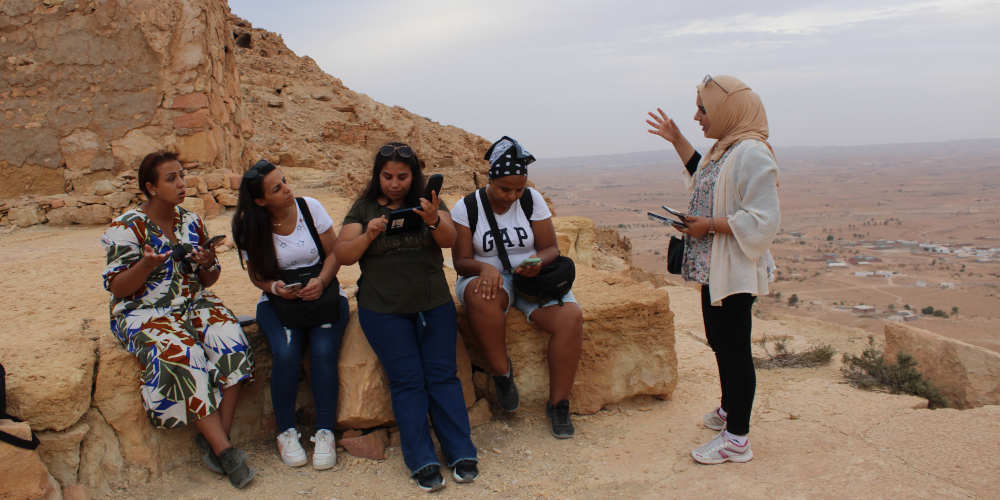
Data collection in the ksar of Guermassa using the app KoboCollect on cell phones and tablets (from left to right: Zayneb Takouti from Carthagina, Hana Bibas, Dorra Ben Khlifa, Haifa Takouti, and Assia Sabri). ASOR aims to empower women in northern Africa by involving them in heritage documentation and outreach activities.
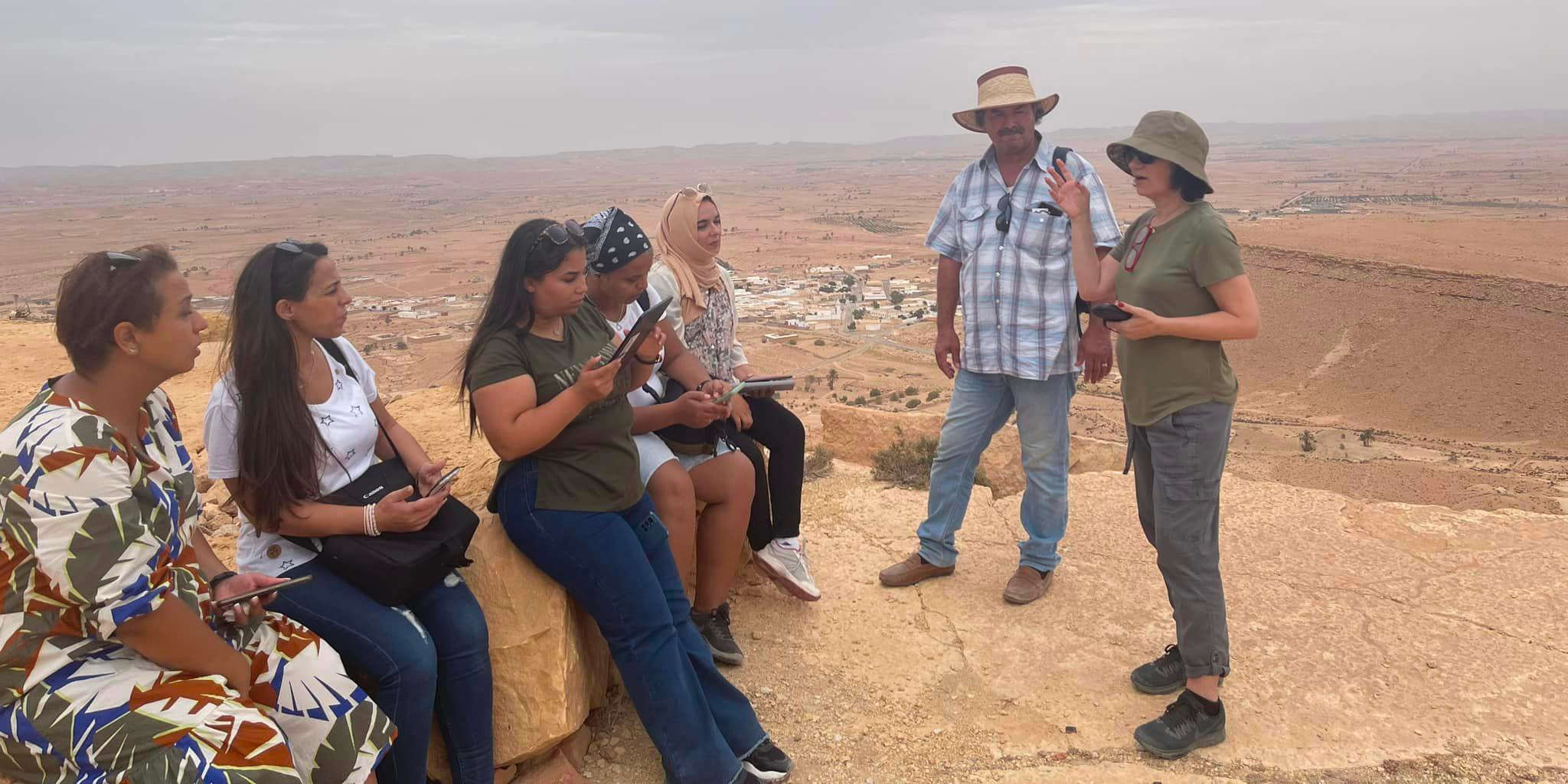
Dr. Hanan Charaf training the participants on documentation tools at the abandoned ksar of Guermassa (from left to right: Zayneb Takouti, Hana Bibas, Dorra Ben Khlifa, Haifa Takouti, Assia Sabri, Mekki Tounekti, and Charaf).
The two-day workshop combined instruction on cultural heritage documentation that focused on (1) KoboToolbox and its associated application KoboCollect, for data collection, (2) QGIS, for mapping, editing, and analyzing of geospatial information, and (3) Agisoft Metashape to create 3D spatial models by processing digital images. The first day was conducted in a classroom, with a few “field trips” in the nearby area to experiment with the documentation tools. The second (long) day involved on-site documentation training at four Amazigh sites in the region.
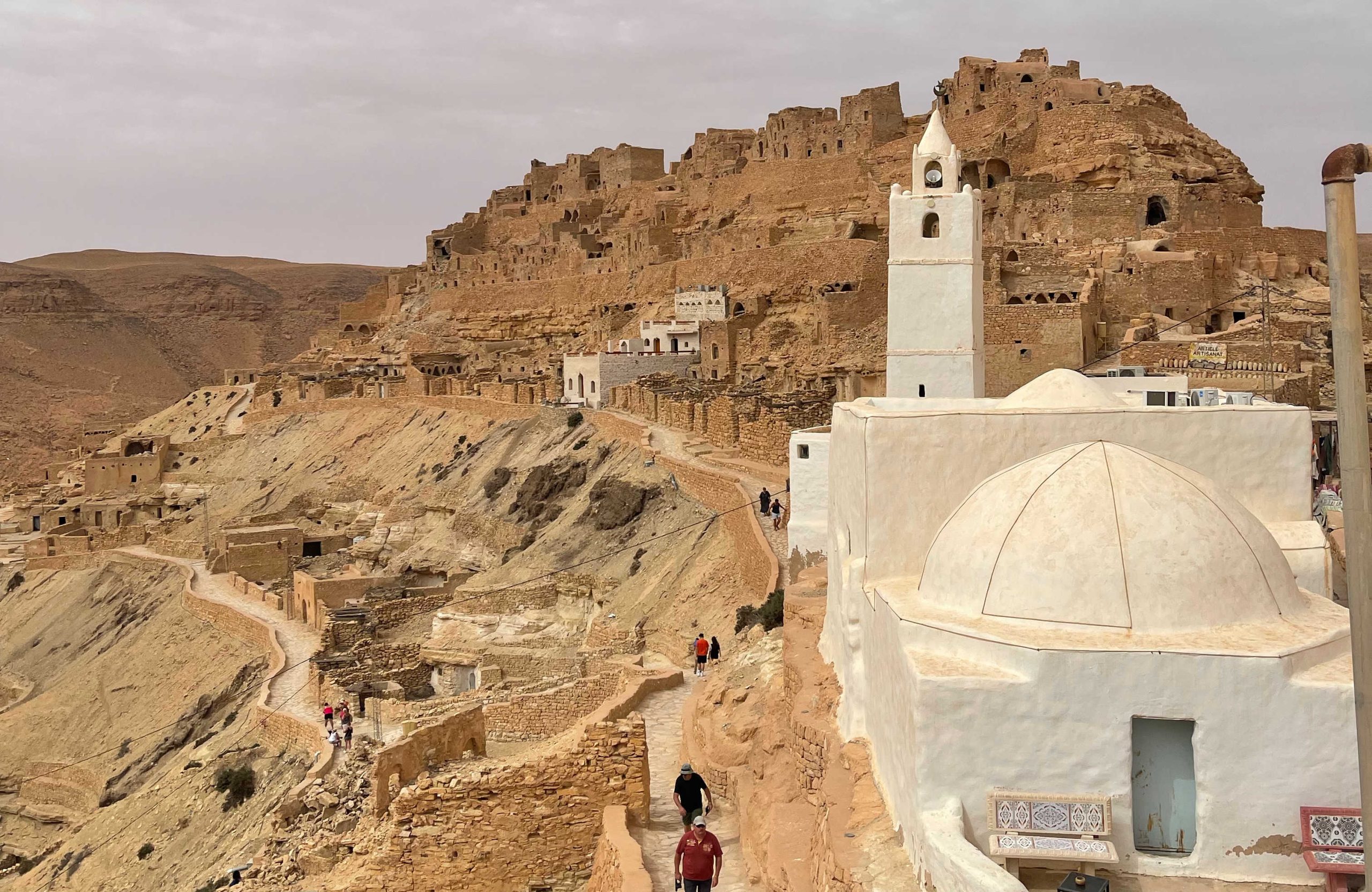
The abandoned fortified village of Chnenni with its scenic setting is now a popular tourist attraction.
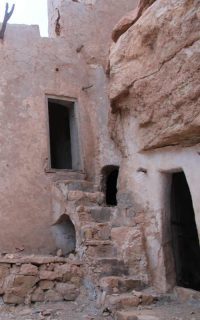
An abandoned house in Guermassa provided an ideal location for photogrammetry field training.
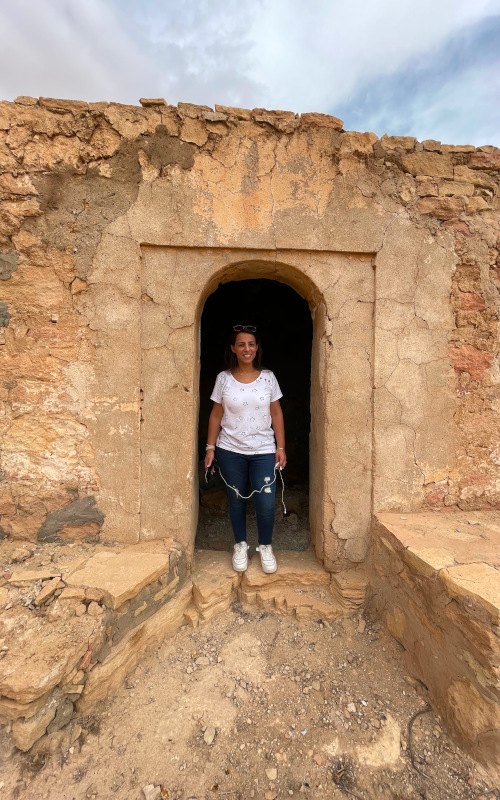
Hana Bibas stands on the threshold of her grandparents’ house in Douiret.
Workshop participants created a database form to document the cultural heritage sites of the region by including elements specific to the Amazigh culture, which was followed by field training on recording the Amazigh built heritage using Android tablets, cell phones, and handheld GPS units. Participants also learn best practices for photogrammetry on site among the surrounding heritage structures.
Field training included full documentation of multiple ksars located at the villages of Douiret, Chnenni, Guermassa, and nearby Toujane. These fortified hilltop villages comprised troglodyte dwellings and oil presses dug horizontally into mountain slopes. Often these villages were also topped by dozens of granaries that supplied food to the entire community. The majority of these villages lie in ruins today, deserted during the later 20th century by their inhabitants who opted for life in Tunis or abroad (mainly to France). Some moved to newly-established villages located at the foothills of these ancestral historic sites. During the documentation trainings carried out on the second day of the workshop, we observed that many of the participants felt emotional ties to these abandoned villages because the houses bad been the homes of their ancestors.
Aside from the technical aspect of the documentation, this training encouraged conversations on the initiatives that could be implemented to engender regional and international awareness of the Amazigh heritage. ASOR is fully committed to encouraging and fostering these goodwill discussions on the national level, and to support through technical and financial assistance actions showcasing this rich patrimony. Already, many of the workshop participants committed not only to continuing geospatial and photographic documentation of sites but to also enlist other community members in their effort with the hope to stimulate an expanding and reverberating interest among the locals. ASOR-supported outreach activities are also in planning and will be reported on in future posts.
